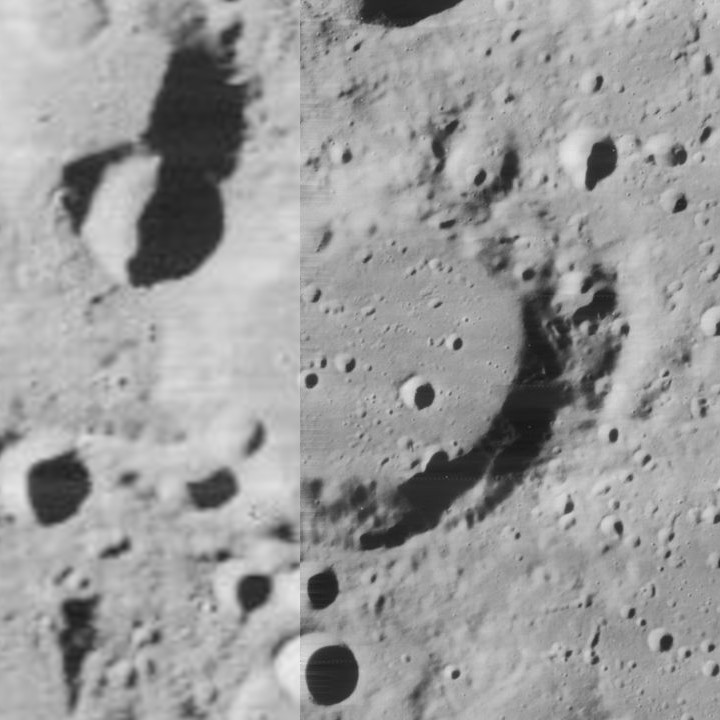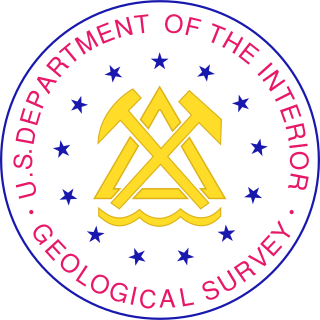
Abul Wafa is an impact crater located near the lunar equator on the far side of the Moon, named after the Persian mathematician and astronomer Abu al-Wafa' Buzjani. To the east are the crater pair Ctesibius and Heron. In the northeast lies the larger crater King, and to the southwest is Vesalius.

Appleton is a heavily eroded lunar impact crater that lies in the northern hemisphere on the far side of the Moon. To the northwest are the craters Von Neumann and Campbel. The smaller Golovin lies to the northeast, while further to the southwest is the Mare Moscoviense.

Boss is a lunar impact crater that is located along the northeast rim of the Moon's near side. Due to its location, the crater is viewed from the side by observers on the Earth, and its visibility is subject to libration effects.

Barrow is an old lunar impact crater that is located near the northern limb of the Moon. It lies between the crater Goldschmidt to the northwest and the irregular formation Meton to the northeast. To the southwest is W. Bond.

Byrd is an irregular lunar impact crater that is located near the north pole of the Moon. The north rim of Byrd is nearly connected to the crater Peary, a formation that is adjacent to the pole. The smaller crater Gioja is attached to the remains of the southwest rim.

Boyle is a lunar impact crater that is located in the southern hemisphere on the rugged far side of the Moon. It is adjacent to the larger crater Hess to the southeast, and lies about midway between the craters Alder to the north-northeast and Abbe to the south-southwest.

Brown is a lunar impact crater that is located in the southeast part of the Moon, to the southwest of the prominent ray crater Tycho. Northwest of Brown is the crater Wilhelm, and to the west is Montanari. This crater was named after Ernest William Brown, and is distinct from crater D. Brown, a satellite crater of the Apollo crater.

Bohr is a lunar impact crater that is located near the western lunar limb, in the area that is affected by librations. It is attached to the southwestern rim of the larger, eroded Vasco da Gama formation, and to the southeast of the crater Einstein. The crater was observed for the first time in 1963 by Arthus and Ewen Whitaker in the book Rectified Lunar Atlas.

Boltzmann is an old lunar impact crater that is located along the southern limb of the Moon, in the vicinity of the south pole. At this location the crater is viewed from the side from Earth, and so not much detail can be seen. It is located to the north of the walled plain Drygalski, and to the west of the crater Le Gentil.

Blackett is a lunar impact crater that lies on the far side of the Moon, behind the southwest limb. It lies beyond the southeast outer ring of the immense Mare Orientale basin. The formation of that major feature has left Blackett deeply marked with ridge features trending from the northwest. Much of the crater has been shaped by the ejecta from Mare Orientale, particularly along the western half of the crater.

Bunsen is a lunar impact crater that lies near the northwestern limb of the Moon. It is located to the west of the Oceanus Procellarum and the crater von Braun. To the southeast is the crater Lavoisier, and to the northeast lies Gerard. Northwest of Bunsen, on the far side of the Moon, is McLaughlin. Due to its position this crater appears foreshortened when viewed from the Earth, and its visibility is affected by libration.

Boussingault is a large lunar impact crater that lies near the rugged southeast limb of the Moon. Because of its location, Boussingault appears highly oblong in shape due to foreshortening. To the southwest is the crater Boguslawsky, and almost attached to the northeast rim is Helmholtz. East-southeast of Boussingault lies the crater Neumayer.

Bronk is an eroded crater that lies on the far side of the Moon, out of sight from the Earth. It lies to the southeast of the larger crater Kovalevskaya. Less than one crater diameter to the east-northeast is the smaller crater Bobone.

Daubrée is a lunar impact crater that is located to the southwest of the Mare Serenitatis, just to the west-southwest of the crater Menelaus in the Montes Haemus range. The small lunar mare Lacus Hiemalis lies along the southwest rim of Daubrée. The crater was named after French geologist Gabriel A. Daubrée. It was previously designated Menelaus S.

Cleostratus is a lunar impact crater near the northwest limb of the Moon. It lies to the northeast of the crater Xenophanes, and west-southwest of the prominent Pythagoras. From the Earth this crater appears highly elongated due to foreshortening.

Carnot is a large crater in the northern part of the Moon's far side. It intrudes into the southern rim of the huge walled plain Birkhoff. To the west-southwest of Carnot is the crater Paraskevopoulos.

Delaunay is a lunar impact crater. It was named after French astronomer Charles-Eugène Delaunay. The craters La Caille to the southwest and Faye to the northeast border on the outer rim of Delaunay. Further to the northwest is the prominent Arzachel.

Charlier is a lunar impact crater that is located on the far side of the Moon. To the south-southeast is the larger crater Kovalevskaya, and northeast of Charlier is Perrine.

Teisserenc is an eroded lunar impact crater on the Moon's far side. It lies just to the east of the crater Sanford, and southwest of Charlier. To the east of Charlier lies Kovalevskaya.


























